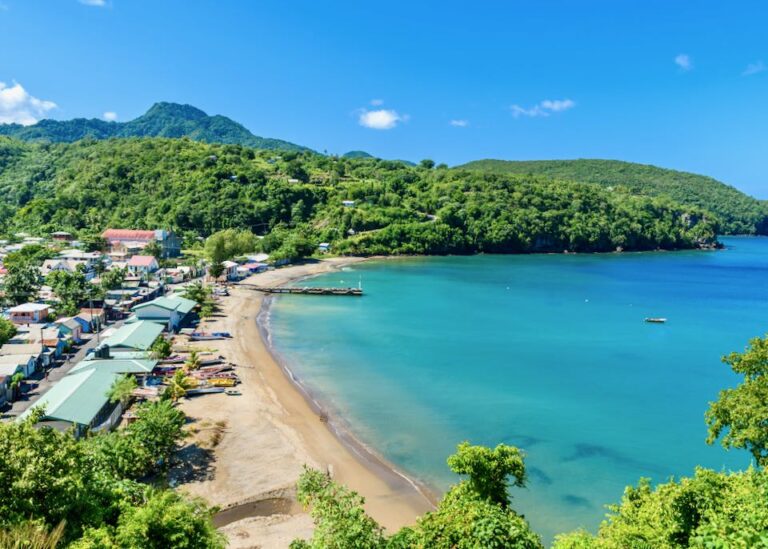St. Lucia — a picturesque island nestled in the Caribbean Sea, renowned for its stunning landscapes, vibrant culture, and warm-hearted people. While this tropical paradise offers a plethora of experiences throughout the year, there is a particular time when caution should prevail for those planning a visit.
The Rainy Season
Visiting St. Lucia during the rainy season, which occurs from June to November, can result in frequent rain showers and increased humidity. This time of year is characterized by tropical downpours and occasional thunderstorms. The rainfall can vary throughout the day, with some periods of heavy rain and others with light showers. The increased humidity can make the weather feel hotter and more uncomfortable, especially for those not accustomed to the tropical climate.
Disrupted Outdoor Activities
Rainy weather during the wet season can disrupt outdoor activities such as hiking, beach days, and snorkeling, limiting the overall experience. The frequent rain showers can make trails and paths slippery, making it unsafe and challenging for hikers to navigate. Beach days may be interrupted by sudden bursts of rain, forcing visitors to seek shelter. Snorkeling enthusiasts may face poor visibility due to the murky water caused by the rain runoff. It is important to note that although outdoor activities may be limited, there are still plenty of indoor attractions and cultural activities to enjoy during this time.
Hurricane Season
When planning a trip to St. Lucia, it’s important to consider the time of year. St. Lucia falls within the hurricane belt, which means that visiting during the official hurricane season, from June to November, increases the risk of encountering severe weather conditions. While hurricanes are relatively rare in St. Lucia, it’s still essential to be prepared for the potential impact they can have on your travel plans.
Potential Travel Disruptions
One of the main concerns during the hurricane season in St. Lucia is the potential for travel disruptions. Hurricanes and tropical storms can lead to flight cancellations, airport closures, and difficulty in reaching or leaving the island. It’s important to keep in mind that these travel disruptions can occur even if the hurricane itself does not directly hit St. Lucia. Weather conditions in neighboring areas might still result in transportation challenges. Therefore, you should plan your trip accordingly and be aware that there might be unexpected delays or changes in your travel itinerary.
Higher Prices and Crowds during Peak Season
When planning your vacation in St. Lucia, it is important to consider the peak tourist season, which runs from December to April. Although this time may seem ideal due to the pleasant weather, it is also the period when prices for accommodations, activities, and services tend to skyrocket. This means that you may end up paying significantly more for your stay and other expenses compared to visiting during the off-peak season.
Increased Crowds
Along with higher prices, the peak tourist season in St. Lucia also attracts a larger number of visitors. With more tourists flocking to this beautiful island, expect to encounter crowded beaches, longer queues for popular attractions, and a generally busier atmosphere. While some people enjoy the energetic vibe, others might find it overwhelming and prefer a more serene experience. If you prefer to avoid the hustle and bustle, it may be best to consider visiting St. Lucia during the quieter months.
Dry Season and Limited Waterfalls
Visiting St. Lucia during the dry season, from January to May, may result in limited water flow in the island’s famous waterfalls, affecting their natural beauty.
Less Impressive Waterfall Experience
During the dry season, waterfalls like the Toraille Waterfall may have minimal water flow, reducing their visual impact and potential for swimming. The lack of rainfall often leads to a decreased volume of water cascading down the rocks, resulting in less dramatic and picturesque scenes. Visitors who are expecting to witness the awe-inspiring power and beauty of St. Lucia’s waterfalls may be disappointed during this time of the year. Additionally, the reduced water flow may make it less enjoyable and refreshing to take a dip in the cool, pristine waters at the base of the falls. It is important for travelers to plan their visit accordingly and consider exploring other attractions of the island during the dry season.
In conclusion, while St. Lucia may be an idyllic Caribbean paradise throughout most of the year, it is important for travelers to be aware of the disappointing season to make the most of their visit. By avoiding the months of September and October, when the island experiences frequent rain and the possibility of hurricanes, visitors can ensure a more enjoyable and memorable experience. Whether you are seeking adventure, relaxation, or simply the breathtaking beauty of this tropical getaway, planning your trip during the optimal seasons will result in a truly unforgettable vacation. So pack your bags, embrace the sun-soaked shores, and get ready to discover the wonders of St. Lucia at its finest!
